Moniek Bloks's Blog, page 80
May 19, 2023
Book News June 2023
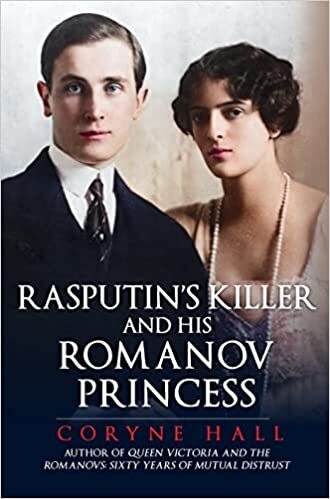
Rasputin’s Killer and his Romanov Princess
Hardcover – 15 March 2023 (UK) & 23 June 2023 (US)
When the Tsar’s eighteen-year-old niece Princess Irina Romanov announced her marriage to Prince Felix Youssoupov, heir to the richest fortune in Russia, the Imperial family were shocked. Prince Felix and his wife Princess Irina had it all. When they married in St Petersburg in 1914 immense wealth and social standing were theirs. But fate had other ideas. In 1916 Felix was involved in one of the most famous crimes of the twentieth century – the murder of Gregory Rasputin, evil genius of Empress Alexandra. It was Irina’s royal blood that ensured Felix was never prosecuted for what many saw as a patriotic act. The following year revolution swept the country and in 1919 Felix and Irina were forced into exile for the rest of their lives. How did they survive in the real world when the money began to run out? Why did they live their lives in the shadow of Rasputin? How did Rasputin save them? And how did Felix redeem himself for Rasputin’s murder? No joint biography of Irina and Felix has ever been written. This book utilises little-known Russian sources, as well as documents recently purchased at auction to reveal new facts, throwing fresh light on the couple’s lives, their relationship and how they never quite escaped from the shadow of Rasputin.
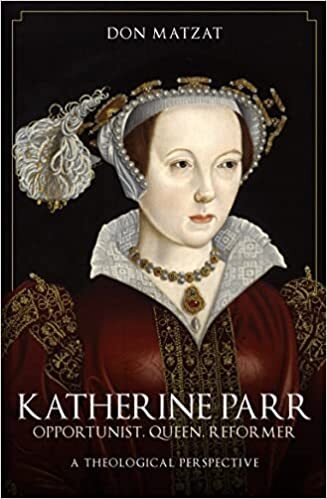
Katherine Parr: Opportunist, Queen, Reformer: A Theological Perspective
Paperback – 15 March 2023 (UK) & 13 June 2023 (US)
Don Matzat here provides a new perspective on the life of Katherine Parr, the sixth and final wife of the infamous Henry VIII. While most biographers suggest that Katherine chose to marry the obese, irascible monarch in order to further some reformation or obey a divine imperative, the author goes against the tide and concludes that Katherine was an opportunist who married the king in order to enjoy the comforts of being the Queen of England, proven by her sumptuous lifestyle. But everything changed for Katherine when she had a dramatic conversion experience, embracing the primary tenets of the Protestant Reformation as described in her seminal work, The Lamentation of a Sinner. Her newly found belief placed her in a precarious position, not only with her husband but with the heresy hunters who, with the king’s blessing, beheaded those who held such beliefs. Yet Katherine had the courage to discuss her faith with her dangerous husband during the final months of his life. The life of Katherine Parr was one of drama, intrigue, danger, deceit, clandestine romance, scandal, tragedy and mystery. She came to a tragic end, and for three hundred years her burial site remained unknown. Katherine ruled England while Henry went to war against France. She was the first woman published in England under her own name. Her Lamentation of a Sinner is a little-known gem of the Protestant Reformation. Her influence upon the children of Henry, the future monarchs Edward VI, Mary I and Elizabeth I, would affect English history for many years to come.
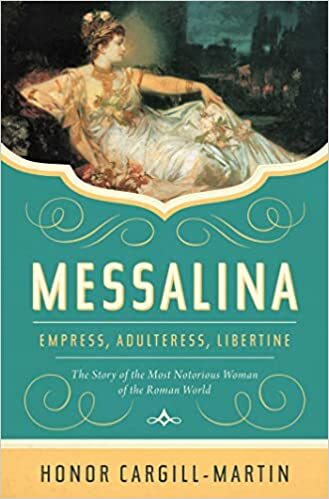
Messalina: Empress, Adulteress, Libertine: The Story of the Most Notorious Woman of the Roman World
Hardcover – 6 June 2023 (US)
The lubricious image of the Empress Messalina as a ruthless, predatory, and sexually insatiable schemer—derived from the work of male historians such as Tacitus and Suetonius—has taken deep root in the Western imagination.
Here, the classicist Honor Cargill-Martin puts this traditional narrative of Messalina to the test. She looks first at Messalina’s life as it is recounted in the primary sources, before using material and circumstantial evidence to reconstruct each aspect of Messalina’s character: politician, wife, adulteress, and prostitute. Finally, she explores how posterity has memorialized Messalina, whether as artist’s muse, epitome of depraved pagan womanhood, or as libertine icon portrayed in literature and film.
Cargill-Martin sets out not to entirely rewrite Messalina’s history, or to salvage her reputation, but to look at her life in the context of her time and to reclaim the humanity of a life story previously defined by currents of high politics and patriarchy.
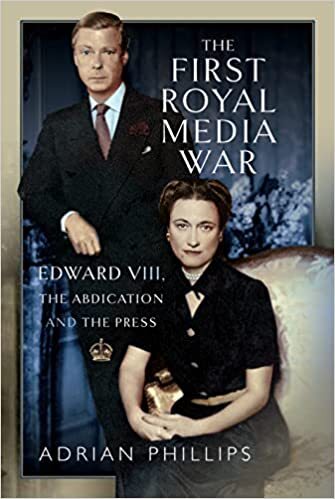
The First Royal Media War: Edward VIII, The Abdication and the Press
Hardcover – 6 April 2023 (UK) & 30 June 2023 (US)
The British press remained tactfully silent almost until the end of the crisis, but behind the scenes, a cold war was being fought. For the rest of his life, Edward fought to air his grievances against the ill-treatment to which he thought that he had been subjected. He believed that he had been forced to abdicate by a coalition of reactionaries grouped behind the Archbishop of Canterbury. Edward resented bitterly the ostracism to which he and Wallis were subjected by his brother and sister-in-law, King George VI and Queen Elizabeth, especially the refusal to grant his wife royal status. With sometimes farcical results, Edward tried to find authors who put over his side of the story. Beaverbrook supported Edward but tried to bend Edward’s quest to fit his own agenda. The establishment did its utmost to restrain Edward and maintain a discreet silence over the crisis, but gradually members of the royal court abandoned reticence and fought back.
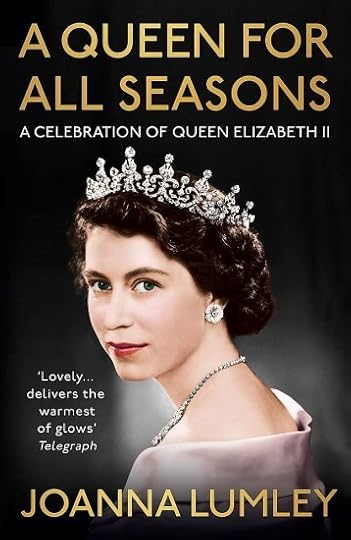
A Queen for All Seasons: A Celebration of Queen Elizabeth II
Paperback – 27 June 2023 (US) & 6 April 2023 (UK)
A Queen for All Seasons is a perceptive, touching and engaging tribute to this unique woman: a treasure chest of first-hand writings, insights and snapshots of The Queen during key moments of her reign.
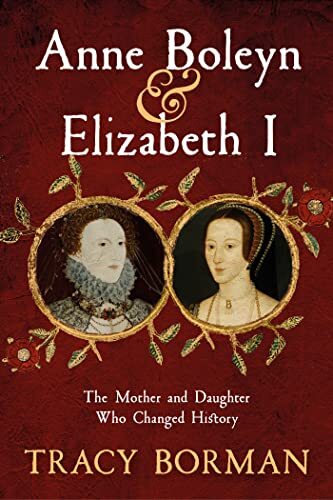
Anne Boleyn & Elizabeth I: The Mother and Daughter Who Forever Changed British History
Hardcover – 20 June 2023 (US)
In its originality, Anne Boleyn & Elizabeth I sheds new light on two of history’s most famous women—the private desires, hopes, and fears that lay behind their dazzling public personas, and the surprising influence each had on the other during and after their lifetimes. In the process, Tracy Borman reframes our understanding of the entire Tudor era.
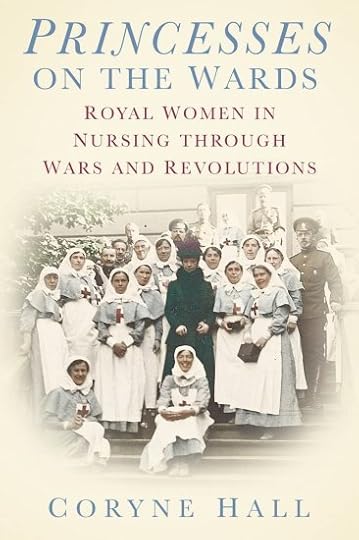
Princesses on the Wards: Royal Women in Nursing Through Wars and Revolutions
Paperback – 20 June 2023 (US) & 29 September 2022 (UK)
Beginning with two daughters of Queen Victoria – Princess Alice and Princess Helena – this book looks at the difficulties these royals faced while carving a worthwhile role in an age when the place of a well-born woman was considered to be in the home. Empress Alexandra of Russia, Queen Marie of Romania, Princess Marina, Duchess of Kent, and Princess Alice of Greece (mother of the Duke of Edinburgh) were just a few of Queen Victoria’s relatives who set an example of service well beyond that considered necessary for their rank. Not all of them were fully trained nurses, but each made a positive contribution towards alleviating suffering which cannot be overestimated.
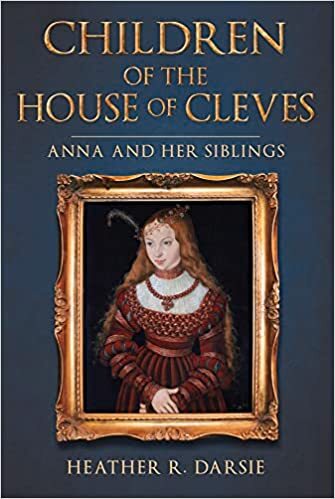
Children of the House of Cleves: Anna and Her Siblings
Hardcover – 15 June 2023 (UK) & 12 September 2023 (US)
Children of the House of Cleves describes and analyses the lives of Sybylla, Anna, Wilhelm and Amalia, the children of Johann III, Duke of Cleves. Though their parents were staunch Catholics, Wilhelm of Jülich‑Cleves‑Berg was a Lutheran – when it suited him. He challenged the Holy Roman Emperor, Charles V, over the strategically important Duchy of Guelders. He believed that France would support him, but Francis I left him defenceless and Guelders became part of the Habsburg Netherlands.
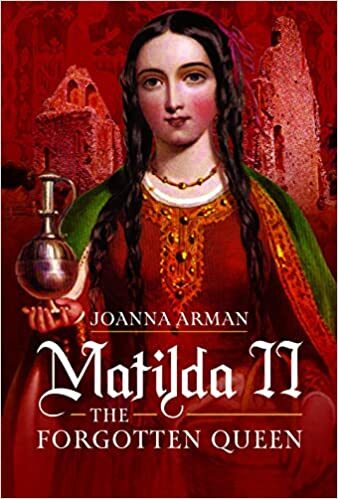
Matilda II: The Forgotten Queen
Hardcover – 30 June 2023 (UK) & 30 August 2023 (US)
The wife of King Henry I and the mother of the Empress Maud is a woman and a Queen forgotten to history. She is frequently conflated with her daughter or her mother-in-law. She was born the daughter of the King of Scotland and an Anglo-Saxon princess. Her name was Edith, but her name was changed to Matilda at the time of her marriage. The Queen who united the line of William the Conqueror with the House of Wessex lived during an age marked by transition and turbulence.
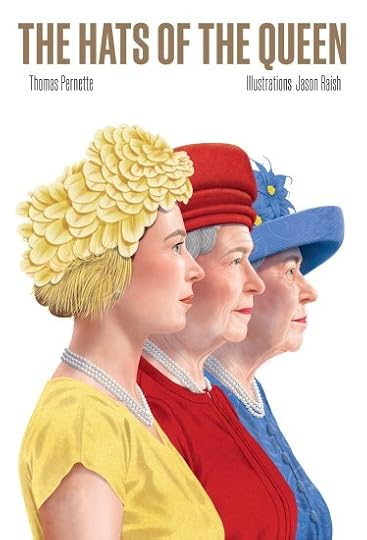
The Hats of the Queen
Hardcover – 11 July 2023 (US) & 8 June 2023 (UK)
The Hats of the Queen examines 50 iconic headpieces adorned by the Queen during her reign, uncovering the royal, political, and fashion landscape of the time. In her 70 years in power, Queen Elizabeth II has made her mark on history, navigating the ups and downs of the past century, and wearing many hats – literally and figuratively. In 1933, little Elizabeth, sits in a carriage alongside her grandfather King George V, wearing a round, pink hat hemmed with flowers. In 2020, the year the world fell into crisis with the covid pandemic, the sovereign dons a very similar hat. Nearly 100 years have passed between these two images, a century of politics, diplomacy, and fashion, which is told, in these pages, through the little-known story of the Queen’s hats. With a foreword by royal correspondent Alastair Bruce, The Hats of the Queen is a beautiful and informative look back on the life and times of her majesty through these iconic accessories.
The post Book News June 2023 appeared first on History of Royal Women.
May 18, 2023
Royal Wedding Recollections – Meghan Markle & Prince Harry of Wales
On 19 May 2018, Rachel Meghan Markle married Prince Harry of Wales, and they subsequently became The Duke and Duchess of Sussex.
Embed from Getty ImagesTheir engagement was announced on 27 November 2017, with Clarence House writing, “The Prince of Wales is delighted to announce the engagement of Prince Harry to Ms. Meghan Markle.”1 Her engagement ring consists of a central diamond from Botswana and two smaller diamonds from the collection of Diana, Princess of Wales. The gold band was later replaced with a slim band of pavé diamonds.2
Embed from Getty ImagesOn 14 March 2018, Queen Elizabeth II officially consented to the marriage as required by the Succession to the Crown Act 2013.3 Although it was not required, Meghan was baptised and confirmed into the Church of England by the Archbishop of Canterbury in early 2018. The wedding was set to take place at St George’s Chapel.
Embed from Getty ImagesMeghan wore a dress designed by Clare Waight Keller, artistic director of Givenchy. It was made of silk and had three-quarters-length sleeves. It had an open boat neckline and a train.
Her long veil was embroidered with flowers from the Commonwealth and the California poppy from her home state. It also included wintersweet, which grows at Kensington Palace. A piece of blue fabric from the dress she wore during their first date was also sown into the veil. Her wedding tiara was a diamond bandeau, which had been made for Queen Mary in 1932.
Embed from Getty ImagesThe bouquet was designed by Philippa Craddock and contained forget-me-nots that had been chosen in honour of Harry’s late mother and myrtle grown from the myrtle used in Queen Elizabeth II’s wedding bouquet. After the wedding, it was placed on the Tomb of the Unknown Warrior at Westminster Abbey.
Embed from Getty ImagesEmbed from Getty ImagesHarry and his brother William, also his best man, wore the frock coat uniform of the Blue and Royals.
Embed from Getty ImagesMeghan met her future father-in-law halfway up the aisle, and he escorted her to the altar. The service was conducted by the Dean of Windsor with the Archbishop of Canterbury. A sermon was delivered by Michael Curry, presiding bishop and primate of The Episcopal Church.
Embed from Getty ImagesThe wedding rings were made by Cleave and Company, with Meghan’s being of Welsh gold and Harry’s of platinum. Contrary to popular belief, the couple did bow and curtsey to Queen Elizabeth II on the way out of St George’s Chapel.
Embed from Getty ImagesAfter the ceremony, the couple went on a carriage procession through Windsor. There was an afternoon reception at St George’s Hall for those who attended the ceremony and an evening reception for friends and family. The wedding cake was designed by Claire Ptak and was a layered lemon and elderflower cake.
Embed from Getty ImagesEmbed from Getty ImagesEmbed from Getty ImagesMeghan did not become a British citizen upon marriage and, as the family now lives in the United States, is unlikely to become one.
The post Royal Wedding Recollections – Meghan Markle & Prince Harry of Wales appeared first on History of Royal Women.
May 16, 2023
Royal Jewels – Queen Victoria’s Bow Brooches
Queen Victoria’s bow brooches were created in 1858 after Queen Victoria had been forced to hand over the jewels of her grandmother Queen Charlotte to her uncle, the King of Hanover.
The stones already belonged to Queen Victoria, 497 brilliant and nine roses. Queen Victoria left the brooches as heirlooms to the Crown.
The brooches were worn by Queen Alexandra at her coronation in 1902 in a vertical row, as did Queen Mary in 1911. Queen Elizabeth the Queen Mother and her daughter Queen Elizabeth II usually wore them singly.1
Embed from Getty ImagesEmbed from Getty ImagesThe post Royal Jewels – Queen Victoria’s Bow Brooches appeared first on History of Royal Women.
May 15, 2023
The Year of Marie Antoinette – The “finest royal wedding anyone had ever seen”
Just two days after meeting him for the first time, Marie Antoinette married the future King Louis XVI of France in person.
On 16 May 1770, the ceremony took place at the Royal Chapel at the Palace of Versailles. Marie Antoinette arrived at Versailles from La Muette at 9.30 in the morning, not yet dressed in her wedding dress. She was taken to the ground-floor apartments that had belonged to her late mother-in-law to prepare for the wedding. She briefly met her husband’s young sisters, nine-year-old Clothilde and six-year-old Elisabeth. She also met his two brothers, the Counts of Artois and Provence, who were 12 and 14, respectively.
She was then presented with the jewels entitled to her as Dauphine of France. As there was no Queen, she also received a collar of pearls which had been bequeathed to the Queens of France by Anne of Austria, Queen of King Louis XIII of France. Anne was not only her husband’s ancestress but also her own.
Marie Antoinette was dressed in a “diamond-studded cloth-of-silver wedding gown”, which had an embarrassing gap at the back through which her underwear could be seen.1 Her “bearing of an archduchess” was commended during the long mass.2 By contrast, her new husband was considered to be sulking, and he trembled as he placed the wedding ring on her finger.3
The following celebrations were felt to be part of the “finest royal wedding anyone had ever seen.”4 After the wedding ceremony, a ballet and an opera were performed at the brand-new theatre. This was followed by a state dinner with a gold service.5
The ritual bedding ceremony was still to come. The Archbishop of Rheims blessed the nuptial bed, and King Louis XV handed his grandson his nightgown. Marie Antoinette received hers from the Duchess of Chartres. They were then formally put to bed before everyone with the Rights of Entry bowed or curtseyed and departed. And then… nothing happened. The marriage would remain famously unconsummated for many years to come.
The post The Year of Marie Antoinette – The “finest royal wedding anyone had ever seen” appeared first on History of Royal Women.
Book made by the future Queen Elizabeth I to go on display
The Bodleian Libraries will display a book made by the future Queen Elizabeth I in their new Gifts and Books exhibition.
The new exhibition will focus on the importance of giving and receiving books and what this reveals about human relationships and beliefs. The book by the future Queen Elizabeth I is a translation of The Mirror or Glass of the Sinful Soul and includes an embroidered cover with the initials of Queen Katherine Parr. Elizabeth gave the book Katherine as a New Year’s Gift in 1544.
Other pieces on display will include a beautiful Qur’an manuscript that later belonged to an Indian ruler, as well as a Jewish prayer book and several books of Christian devotion.
Dr Nicholas Perkins, curator of Gifts and Books, says, “Giving and receiving books and stories is something we all do to make friends and form communities. Over the centuries, books have not only been precious gifts, but have also spoken to us about giving, receiving and reciprocating. Our exhibition explores and celebrates this power that the gift generates.”
The exhibition will be accompanied by a book, published on 16 June 2023 by Bodleian Library Publishing, Gifts
and Books, edited by curator Nicholas Perkins.
Gifts and Books
16 June – 29 October 2023
Weston Library, Bodleian Libraries, Oxford
The post Book made by the future Queen Elizabeth I to go on display appeared first on History of Royal Women.
May 14, 2023
The Year of Marie Antoinette – Marie Antoinette & her sister Maria Christina (Part two)
Maria Christina and her sister would not see each other for quite some time, but there was no love lost.
Maria Christina and her husband focused on creating a cultural court, and they also began collecting art. Unfortunately, although they had been promised the governorship of the Austrian Netherlands, they had to wait until 1780 for the current holder of the title to die. That same year, Maria Theresa also died.
Maria Christina had already noticed that her mother was becoming short of breath, merely crossing a room. The Empress told her that writing hurt her hands. Maria Christina, Albert, Joseph and their sisters Maria Anna and Maria Elisabeth were all with her when the doctors gave up hope on 28 November 1780. She received the last rites that day and died the following day at 8.45 p.m.
Maria Christina and Albert were able to make their entry into Brussels on 10 July 1781 after Joseph had been assured that he could not revoke their mother’s promise. They were immediately popular with the public and had the Palace of Laeken built at their own expense. However, Joseph would leave them out of important decisions, and they often felt blindsided by his reforms. During a visit to Vienna in 1786, they were suddenly informed that they no longer had any authority. Maria Christina returned home to Brussels believing that her mother would have wanted her to moderate the transition of power.
At the end of August 1786, Maria Christina and Albert were finally able to visit Marie Antoinette in France. Marie Antoinette did not care for her sister and had previously always come up with an excuse to defer a visit. Now, she was still confined to her bed after the delivery of her fourth child, and she had run out of excuses. In addition, Marie Antoinette had recently faced the Affair of the Diamond Necklace, which had hurt her reputation. Maria Christina was essentially their mother in her ever-disapproving form.
Maria Christina and Albert were invited to Versailles, where they were received by Marie Antoinette for an hour before she introduced them to her husband. Maria Christina wrote, “The Queen is beautiful, amiable, and natural; I am not praising her because she is my sister, but you know I am telling the truth. The King was kindhearted and cordial; he has a solid righteous character and makes his wife very happy.”1
They stayed in Paris for a month and were shown around by the Count of Mercy. They played cards, attended the theatre and toured churches and art galleries. They never did manage to secure an invite to the Petit Trianon from Marie Antoinette. Maria Christina later wrote, “I like Paris very much but live there, not for anything in the world – not even as Queen.”2
In 1791, as Marie Antoinette and her family planned to flee from the revolution, Maria Christina prepared for their arrival in Brussels. Maria Christina was devastated to learn that the flight had been unsuccessful. Count Fersen, who had facilitated the escape, was received by Maria Christina. He later wrote, “At one o’clock went to the Archduchess; very kind to me and much touched.”3 Maria Christina wrote, “I have not since the death of my adored father and my mother experienced any greater anguish than the news of the unfortunate fate of my poor sister. You probably know that she was captured barely four miles from the border; had she taken a different route, she would have been saved, like Monsieur (Louis’s brother) and his wife. I am inconsolable about my unfortunate sister and her innocent children.”4
In 1792, Maria Christina and Albert were ousted as governors of the Austrian Netherlands, and they moved to Dresden and then back to Vienna. By then, her brother Joseph had died, followed by his successor Leopold in March 1792. The new Emperor was now Maria Christina’s nephew Francis II.
Maria Christina continued to support Count Fersen, who continued to try and think of a way to save Marie Antoinette. Unfortunately, his efforts would be in vain. On 16 October 1793, Marie Antoinette was executed. He was devastated and wrote, “I can think only of my loss. It is awful to have no positive details, to think she was alone in her last moments, without consolation, without a person to whom she could speak, to whom she could give her last wishes. It is horrible. Monsters of hell!”5
Maria Christina was in shock too. She wrote, “Maria Theresa would never have believed that she put children into the world who would be tortured by the vicious, oppressed by cabals, covered in ignominy and end their lives on the scaffold. I cannot get over the sorrow which the unfortunate had to suffer even in her last months, especially because of her children… death ends all grief and anguish.”6
Maria Christina outlived her sister for five years and was able to see the arrival in Austria of her niece, Marie-Thérèse. However, her wish to see Marie-Thérèse married to her adoptive son came to nothing.
By the summer of 1798, her health had deteriorated considerably, and she knew she was dying. She died on 24 June 1798 and was buried in the Imperial Crypt with her parents and siblings.
The post The Year of Marie Antoinette – Marie Antoinette & her sister Maria Christina (Part two) appeared first on History of Royal Women.
May 13, 2023
The Year of Marie Antoinette – The meeting at Compiègne
After her proxy wedding, Marie-Antoinette left Vienna on 21 April at nine in the morning. The hour had been planned deliberately early to avoid an emotional scene.
Nevertheless, her mother held her again and again. Finally, she said, “Farewell, my dearest child, a great distance will separate us… Do so much good to the French people that they can say that I have sent them an angel”, as she cried.1 A total of 57 carriages would carry the new Dauphine to France.
Most of the two-and-half-week journey was spent cooped up in the velvet and gold carriage. They usually travelled for nine hours during the day before stopping for the night. Her first overnight stop was at the monastery of Melk, where she was treated to an opera during the evening. She reached Munich on 26 April, where she was entertained by the Elector of Bavaria and where she was allowed to rest for a day. Then she travelled to Augsburg and Günzburg, where she spent time with her aunt Princess Charlotte of Lorraine. She then travelled to Ulm and reached Freiberg on 4 May.
On 6 May, she reached Schuttern Abbey and spent her last night on German soil. The following day the official handover took place on an island in the middle of the Rhine. Her late mother-in-law had been handed over on the island 23 years earlier as well. A wooden pavilion had been erected to look like a small château. It had five rooms: two antechambers on the French side, two on the Austrian side and a central drawing room. It had been furnished with loaned furniture.
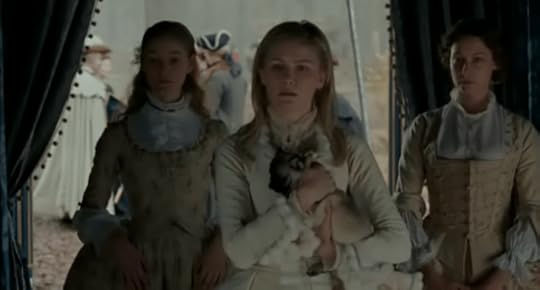 The handover on the island as portrayed in Marie Antoinette (2006)(Screenshot/Fair Use)
The handover on the island as portrayed in Marie Antoinette (2006)(Screenshot/Fair Use)Marie Antoinette said goodbye to most of her Austrian attendants before retiring to one of the Austrian rooms. Even her beloved dog, Mops, was not allowed to accompany her. She took off her Austrian travelling clothes and changed into a French ceremonial dress in gold fabric.2 She was then led to the central drawing room, where she sat in an armchair placed under a canopy. As the formalities were completed, Marie Antoinette saw the door to the French side being opened. As she looked back to the Austrians, they had all disappeared. Sobbing, Marie Antoinette threw herself into the arms of the Countess de Noailles.3
The Countess was known for her strict adherence to etiquette, and she shrugged the Dauphine off before dropping into a low curtsey. She coldly indicated that this behaviour was not suitable for a Dauphine. Marie Antoinette excused herself and said, “Pardon me, These are for the family and the fatherland I am leaving; for the future, I shall not forget that I am French.”4 After being introduced to the gentlemen and ladies of her household, Marie Antoinette travelled to Strasbourg.
She finally met her husband and his grandfather, King Louis XV, on 14 May, at the edge of the forest of Compiègne. King Louis XV had brought not only his grandson but also three of his four surviving daughters (known as the Mesdames). Marie Antoinette alighted her carriage onto a ceremonial carpet, and she was presented as “Madame la Dauphine.” Marie Antoinette sank into a deep curtsey before the man who would now be “papa” or “papa-roi.”5 Touched by this gesture of submission, King Louis XV raised her up. She was formally introduced to her husband, who later recorded in his diary, “Meeting with Madame la Dauphine.”6
At the Château of Compiègne, Marie Antoinette was introduced to the Princes and Princesses of the Blood, who were all relatives of the King. She would also meet the widowed Princess of Lamballe, who would become a close friend.
The post The Year of Marie Antoinette – The meeting at Compiègne appeared first on History of Royal Women.
May 12, 2023
The Year of Marie-Antoinette – Marie Antoinette & her mother Maria Theresa
Maria Theresa of Austria was born on 13 May 1717 as the eldest of two surviving daughters of Charles VI, Holy Roman Emperor and Elisabeth Christine of Brunswick-Wolfenbüttel. Her father attempted to secure her succession to the Habsburg lands with the Pragmatic Sanction of 1713. She eventually succeeded him, although it triggered the War of the Austrian Succession. Her husband, Francis of Lorraine, was elected as Holy Roman Emperor, making Maria Theresa Holy Roman Empress as well.
The couple had 16 children together, of which the future Queen of France – Marie Antoinette – was the youngest daughter. Like her siblings before her, Marie Antoinette’s early youth was spent with a wet nurse. Her birth date was rather auspicious as it fell on All Souls’ Day, and so it was usually celebrated a day early.1 Marie Antoinette was her father’s favourite, and he indulged her. On the other hand, Marie Antoinette was intimidated by her mother.2 She later said, “I love the Empress, but I’m frightened of her, even at a distance, when I’m writing to her, I never feel completely at ease.”3 Maria Theresa had a clear favourite in her elder sister Maria Christina.
Marie Antoinette would later remember her childhood as idyllic, and as her parents’ 15th child, and as a daughter, the focus was not on her. The children were encouraged to make friends with “ordinary” children.4 The paintings made of the family portray a cosy home life that she would not find at Versailles. Music became the central part of her early childhood, but her father’s death in 1765 left such a mark on her mother that she remained dissatisfied with everything her children did.
Marie Antoinette was not a good student as she disliked reading and could not focus. However, her mother demanded to see all her schoolwork, after which her governess composed the papers for her and Marie Antoinette traced over the pencil. By 1768, the 12-year-old Marie Antoinette was one of just three unmarried Archduchesses. The eldest was her scarred-by-smallpox 25-year-old sister Maria Elisabeth and the second was her 22-year-old sister Maria Amalia. Maria Theresa was intent on making two more matching – with Parma and with France. After vetoing a match between himself and Maria Elisabeth when told of her scarred face, King Louis XV of France finally agreed on a match between his grandson, the Dauphin, and Marie Antoinette. This also sealed Maria Amalia’s fate as the next Duchess of Parma. Maria Elisabeth was destined to remain unwed.
With the match in place, it became increasingly clear how unprepared and uneducated Marie Antoinette was. She could not communicate well in French, and she struggled to read and write. Thus, the 13-year-old was sequestered at Schönbrunn in an attempt to make up for this as quickly as possible. She was taught posture, curtseying, French history, language and literature. After six weeks, the abbé de Vermond wrote, “She is cleverer than she was long thought to be. Unfortunately, that ability was subjected to no direction up to the age of twelve.”5 Two weeks before her 14th birthday, he happily reported that she “talks French with ease, and fairly well.”6 Marie Antoinette also underwent three months of treatment for her crooked teeth.
On 19 April 1770, Maria Theresa led her daughter down the aisle for the proxy wedding ceremony. Two days later, she would leave Austria forever, but Maria Theresa had no intention of letting her daughter go. Although they would never see each other again, letters would pass between them until Maria Theresa’s death. Maria Theresa had even placed the Count of Mercy at the French court as her surrogate. He was to report everything her daughter did back to her. To King Louis XV, Maria Theresa wrote, “Her age craves indulgence.” She also asked him to act like a father to the young Dauphine.7
The lack of consummation was, of course, immediately reported back to Maria Theresa, as was the fact that Marie Antoinette ignored the King’s mistress, Madame du Barry. This earned her berating letters from her mother, who feared that she would be repudiated and sent home.8 Marie Antoinette dutifully reported the arrival of her period every month to her mother.9
Even becoming Queen of France did not stop Maria Theresa from berating her daughter. In March 1775, she wrote, “I must mention a subject upon which all of the Gazettes enlarge, and that is your dress.[…] You know my opinion, to follow fashion in moderation, never to excess. A young and pretty queen has no need of follies.”10 However, after five years of scathing letters, Marie Antoinette was not so impressed by her mother anymore.
After a visit by her brother, Marie Antoinette and King Louis XVI finally managed to consummate their marriage, much to everyone’s relief. Just one year later, she was able to confirm her first pregnancy. On 19 December 1778, she gave birth to a daughter – Marie-Thérèse, known as Madame Royale. But Maria Theresa would not live to see the birth of the Dauphin.
Even in her last letters to Marie Antoinette, she worriedly asked if it was true that she and King were sleeping separately. Marie Antoinette confirmed it but assured her mother that it was considered the custom in France. Maria Theresa replied, “I confess that I did not know for certain that you did not sleep together; I only guess. I must accept that what you tell me is right. But I should have liked it better if you could have lived in the German way and enjoyed that certain intimacy which comes of being together.”11
One month later, the formidable Empress was dead. King Louis XVI decreed grand mourning for his mother-in-law but felt unable to break the news to Marie Antoinette. He instead sent the abbé de Vermond to tell her. Marie Antoinette wrote to her brother Joseph, “Devastated by this most frightful misfortunate. I cannot stop crying as I start to write to you. Oh, my brother, oh, my friend! You alone are left to me in a country, which is, and always will be, so dear to… Remember, we are your friends, your allies. I embrace you.”12
The post The Year of Marie-Antoinette – Marie Antoinette & her mother Maria Theresa appeared first on History of Royal Women.
The Year of Marie Antoinette – Marie Antoinette & her sister Maria Christina (Part one)
Maria Christina of Austra was born on 13 May 1742 as the daughter of Maria Theresa of Austria, who celebrated her 25th birthday that day, and Francis of Lorraine – Holy Roman Empress and Emperor. She was reportedly her mother’s favourite child and was nicknamed Mimi in the family. She was 13 years old when her youngest sister Marie Antoinette was born. She was not popular among her siblings, who were jealous of their mother’s apparent preference.1
In contrast to Marie Antoinette, Maria Christina was a good student, particularly where languages were concerned. She loved music and began drawing and painting at an early age. Her early years were structured; she was awoken at 7.30 to pray. From 8.30 to 10, Maria Christina and her sisters were instructed in grammar and handwriting. Then at 10, they attended mass. Afterwards, they were instructed in French until noon. They then had an hour with their mother, and then they were taught religion, embroidery and music until 5. They were then back in church and were allowed to walk outside for exercise.
In 1757, Maria Christina fell ill with smallpox, but fortunately, the spotting was minimal, and she was not as sick as her brother. Maria Christina became attached to her brother Joseph’s new wife, Isabella of Parma. Shortly after her arrival, Isabella fell into the hands of melancholy.2 When she became pregnant in the middle of 1761, it seemed to make things even worse. She told her parents-in-law, “Death speaks to me in a distinct voice that rouses in my soul a sweet satisfaction.”3 Isabella found Joseph very controlling and overbearing and often tried to escape his presence. She began to spend most of her time with Maria Christina and began to harbour romantic feelings for her, which also affected her already melancholic mood. During her pregnancy, she suffered from constant headaches, and she was watched closely by doctors. Finally, on 20 March 1762, at 7 p.m., Isabella gave birth to a daughter who was named Maria Theresa, after her grandmother. She was baptised the following day with her grandparents Maria Theresa and Francis Stephen among her godparents. The delivery had been difficult for Isabella, and it took several weeks for her to recover.
Whenever Isabella and Maria Christina were apart, they wrote each other letters. Unfortunately, Maria Christina’s letters have not survived, and they were probably destroyed by Maria Christina after Isabella’s death. However, she carried with her around 200 letters that Isabella had written to her, even taking them with her as she travelled. These letters were later deposited in the archives by her husband, which is why they have survived to this day. The relationship between Maria Christina and Isabella has been much discussed, but the letters clearly show how madly in love Isabella was. The fact that Maria Christina kept these letters tells me that she likely reciprocated these feelings. However, even Maria Christina could not understand Isabella’s melancholic moods and her growing obsession with death. In the early morning of 27 November 1763, Isabella died of smallpox shortly after giving birth to a daughter who had been named Maria Christina. After her death, Maria Christina carried a miniature of Isabella in her prayer book.
Maria Christina was ready for marriage, and Prince Albert of Saxony certainly had his eye out. Albert wrote, “All the Princesses are beautiful, but the second one had such a graceful figure, such a noble, intellectual countenance that I was in love with her from the very first moment.[…] Her conversation was as delightful as her appearance, yet I dared not tell her what I felt. A princess of her standing was far above a portionless younger son.”4 It took a while, but Maria Christina was soon in love as well. In early 1764, Maria Christina secretly promised to marry him.
After waiting a while, Maria Christina privately went to her mother and told her about her love for Albert and their desire to marry. Her father wanted her to marry someone else, and Maria Theresa would not overrule him. She told Maria Christina to wait it out. Francis’s sudden death on 18 August 1765 changed everything. Maria Christina was on hand to support her mother in her grief, and just three months later, Albert’s older brother made a formal request for Maria Christina’s hand on behalf of Albert. Maria Christina now also required her brother Joseph’s permission, and she was happy to learn that he was enthusiastic about the match. Albert was informed by Joseph himself, and apparently, “It was a long time before he would believe that I was speaking seriously.”5
As he was relatively penniless, Maria Theresa was incredibly generous to them. Joseph also ceded the Duchy of Teschen to them, and they were promised the governorship of the Austrian Netherlands and Hungary. Their wedding took place on 8 April 1766 – Maria Christina had managed to marry for love.
On 16 May 1767, Maria Christina gave birth to her first and only child, a daughter named Maria Christina Theresa, who tragically lived for one day. Maria Christina also became seriously ill with puerperal fever, and Maria Theresa was constantly by her daughter’s side as she recovered. Marie Antoinette wrote to her, “How I envy Marie Christine, the happiness of seeing you so often!”6 Maria Christina and Albert would eventually adopt one of the younger sons of her brother Leopold, Grand Duke of Tuscany as their heir.
Although Maria Christina and Albert were officially based in Hungary, she still remained mainly at home as a confidante to her mother. When the marriage for Marie Antoinette was arranged, she was to undergo a crash course for her education at the Hofburg. The sisters had never been particularly close, but this was undoubtedly the end of an era.
Part two coming soon.
The post The Year of Marie Antoinette – Marie Antoinette & her sister Maria Christina (Part one) appeared first on History of Royal Women.
May 11, 2023
Royal Jewels – Queen Victoria’s Bracelet
Queen Victoria’s bracelet is “composed of five square foliage-pattern sections, partly pave-set, the larger brilliants in open-back collets; with later extension.”1
The bracelet was probably delivered to Queen Victoria in 1838 if it is the “bracelet band of 5 rows” mentioned in the records. It was part of several pieces she had made from inherited jewels. The bracelet was designed as an heirloom of the crown.
Queen Victoria wore the bracelet in the official portrait for her Golden Jubilee portrait, together with the coronation necklace and earrings. She also wore them for the wedding of the future King George V and Queen Mary. Queen Alexandra (born of Denmark) wore the bracelet for her coronation in 1902.
Embed from Getty ImagesThe bracelet passed from Queen Mary to Queen Elizabeth (the Queen Mother) and then to Queen Elizabeth II in 2002.
The post Royal Jewels – Queen Victoria’s Bracelet appeared first on History of Royal Women.



